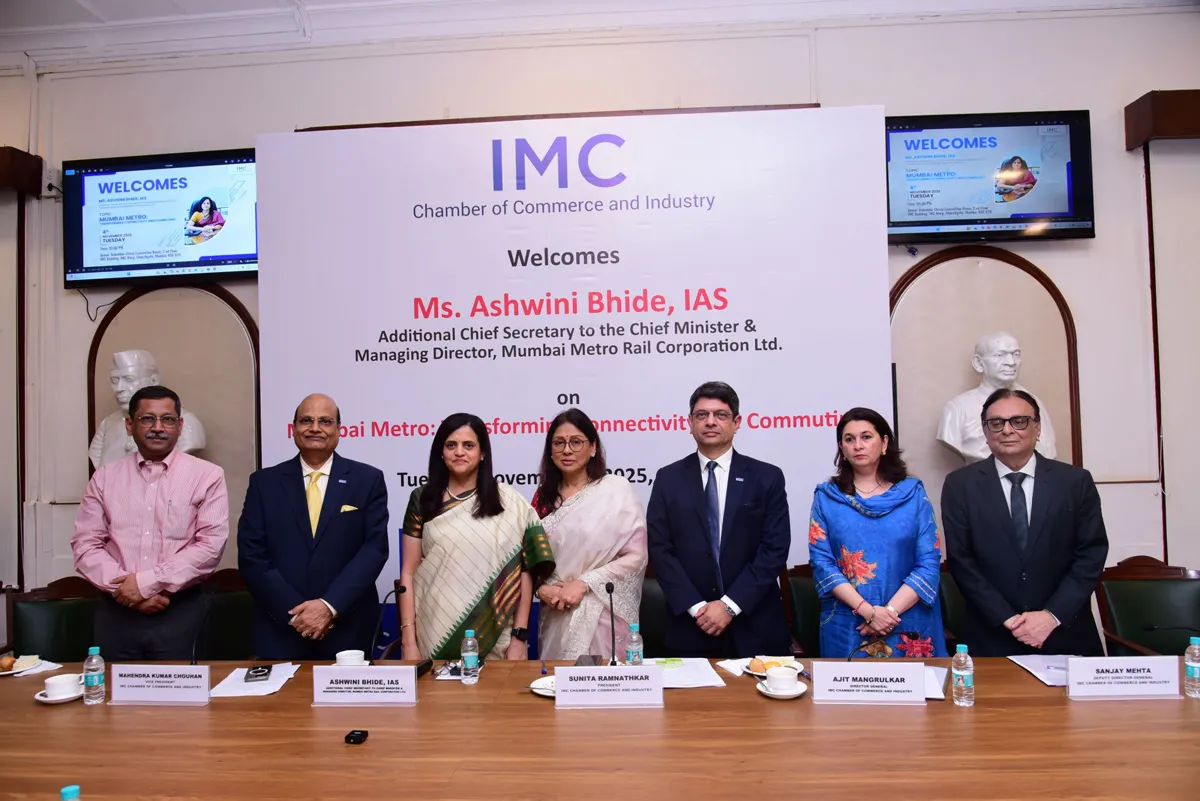-
Suresh Khatanhar, Chief General Manager, IDBI Bank
In the current scenario, where banks are shying away from funding SMEs in India, IDBI Bank is supporting this enterprise with more than 16 dedicated products.
Suresh Khatanhar, Chief General Manager, IDBI Bank, urges SME players to be more transparent, adopt new methods and technology, and become more competitive in their respective fields, in an interview with
RAHUL KAMAT.
The SME sector does not have timely and unrestricted access to finance like its peer sector. What needs to be done for SME financing?
At present, there are ample measures taken by the government. But that does not mean banks are shying away or the SME sector does not have timely access to finance. Indian PSU banks are wholeheartedly supporting the entire SME programme, which is not a new thing. But one must understand that this sector is completely dependent on the main strata of the economy, like the infrastructure sector. Unfortunately, the past couple of years were challenging for us as we were not decoupled from global economic fluctuation. Hence, whenever there is a global downslide, the SME sector will be the first to be part of the tragedy.
Meanwhile, it's a misconception that banks do not support SMEs. As far as IDBI is concerned, we offer over 16 different mixtures of products for the SME segment. Our experience in this segment has been good, as we don't have many NPAs. Importantly, the loans have been used towards further production and expansion of business by SME players. In fact, our exposure to the SME segment is substantial. If you look at the earnings, the retail and commercial side (SME and agri) has contributed more than 90 per cent in the last quarter because it has better spreads, which has actually helped us increase net interest margins.
The Finance Minister has increased security for businesses up to Rs 60 lakh to those up to Rs 2 crore. But entrepreneurs and businessmen expected the Union Budget 2016 to extend security to SME of Rs 10 crore. Do you see any reason behind the same?
Why just Rs 2 crore; why not a security cover up to Rs 20 crore, or further? There is no end for such demand.
The government's budgeting is based on certain data, trends and analysis and they have to balance both sides.
The government cannot meet the expectations of the entire industry, so the security cover up to Rs 2 crore must be based on detailed studies and recent trends, which is a good decision, according to me. I also urge SME players not to make a hue and cry about this decision.
While total interest expenditure has increased from Rs 41,867 crore to Rs 57,957 crore, the rate of growth of interest expenditure has come down from 21.27 per cent to 15.53 per cent. Can we infer from this that most SMEs' exposure to bank credit is falling?
No, you cannot relate the falling SME credit exposure to growing attraction towards private moneylenders, because there are a number of elements to be considered. Interest expenditure is booked under interest expense only, whether a SME player borrows from banks or a private moneylender. In the overall business, one must analyse the topline of a SME too. If the topline is sliding, activities are definitely low in the segment.
So it is not prudent just to borrow funds and pay interest component. That said, financing is always in relation to the generation of goods and services in the country. So, while a SME has good manufacturing activities and its products are in demand, they may not require funds from banks, which can decrease their exposure to a bank. Second, in the past two quarters, the Reserve Bank of India has considered supporting the industry with rate cuts that, in turn, it has passed on to SME players. So the decrease in credit exposure is actually a good sign for the SME sector and I am happy to learn about this new development.
If you add up other bank charges, such as processing fee and collateral requirements for loans upwards of Rs 1 crore besides other costs, the total cost of credit actually turns out to be about 17 per cent. Don't you think this is exorbitant for small companies and sucks out their bottomlines?
I do not subscribe to this as it is totally wrong to say that the entire costing is 17 per cent. On an average, the interest rate a bank offers to an SME player is around 11 per cent. Now, even if you consider processing fees, which are absolutely not in the range of Rs 10 lakh or Rs 50 lakh, the total interest component does not exceed 11 per cent at all. In fact, some banks do not even charge processing fees. So there is no question of the total interest component to a SME being escalated to 17 per cent. As a policy, banks do charge processing fees for a requirement up to Rs 10 lakh. And, beyond that, an SME has to show its fixed assets as collateral. So there is no way that the cost of credit turns out to be about 17 per cent. Here, I am unable to understand what cost collateral will add to the credit.
Suppose a bank asks office property to be mortgaged, where is the question of addition of cost? This is a misconception that needs to be addressed through raising awareness. Collateral increases the commitment of a SME promoter.
What are the key challenges while financing an SME in India? What are your suggestions as an SME financing agency to overcome the same?
The biggest challenge is geographical reach. While we have initiated use of the business correspondent models to reach them, SMEs are still comfortable sourcing finance through private moneylenders. For them it is much easier, as it does not require collateral or guarantee or even profit-and-loss accounts. But we are trying to connect the last mile and spread more awareness. In fact, the entire banking industry, through the business correspondents, is reaching out to the SMEs.The second challenge is transparency by SME players.There is a tendency to show lower profits for a low income-tax regime. This makes it tough to do an in-depth assessment based on their cash flow and documents other than financial data. At present, the SME sector lacks adequate knowledge of accounting and resources as companies may not be able to afford a highly qualified chartered accountant. But as a banker, we take the overall 360o view of the requirement and work towards arresting the concerns.
Another impediment for the SME sector is its vulnerable business models. For example, if a SME supplies certain products to its vendor, and suddenly the vendor's requirement is fulfilled, the entire business model of a SME will collapse. Suppose a product is halted for three or six months, the SME often has no capacity to hold on for that much time. Further, if the SME takes finance that is unproductive, it only makes matters worse and the entire funding pattern will become unviable.
While agreeing that the business models of SMEs are vulnerable, is it not their responsibility to go beyond certain limits and take the risk? They need to change their mindset..
I will not agree with you on this point because our banks have supported many SMEs by funding a mere Rs 5 lakh; but today, they have a requirement of Rs 100 crore. These SMEs have witnessed the growth of a corporate. You should understand that a big corporate was always a SME first.
Some chose to grow and some chose to stick with their age-old model of growth. But I must admit that the success rate to grow beyond a certain level in SMEs is low. Indian SMEs cannot absorb sudden shockwaves. That said, those who are able to survive because of higher past earnings or higher margins will sail through the shockwaves. All considered, to encourage SMEs, banks are always ready to assist with additional financing whenever necessary. But again, it has to be a viable and sustainable proposition.
To share your views on this interview, write in at feedback@ConstructionWorld.in




















